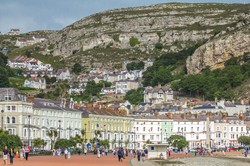One interesting thing was the occurrence of Spanish names of people marrying my French ancestors. They were easy to trace back, and often led back to ships from the Canary Islands.
The history here is that at the time of the American Revolution there were British garrisons near New Orleans in the Baton Rouge area. Louisiana belonged to Spain, which was not on good terms with the British. A fear that the British would attack New Orleans either through the Mississippi River from the Gulf of Mexico or from the garrisoned troops in the area led Spain to recruit and send troops from the Canary Islands, its southernmost province off North Africa. There was a second purpose, the intent to build the Spanish colony of Louisiana, so entire families were sent. A total of seven hundred troops plus their families left on seven ships. One of the seven ships encountered a British fleet, and diverted to Cuba. The other six brought troops to Louisiana. They were scattered along the coast as coast watchers, and stationed on the Mississippi River to defend New Orleans.
Governor Galvez, also a general, marched against the British in Baton Rouge, a feat allowed by the arrival of these Canary Islanders. Here the French branch of my line also gets involved. Those French speaking people evicted from what is now Canada had arrived about a decade earlier, and remembered their harsh treatment. They volunteered to join the fight with about six hundred taking part. Galvez easily prevailed, and later took other British forts, including Vicksburg. Had the British taken control of the Mississippi River the outcome of the war could have easily been changed, And had the French speaking Catholics not been forced from Canada, perhaps the British could have prevailed against Galvez.
This history answered a question that came up in my ancestry search. Several people had done a search to proof an association with the American Revolution, but Louisiana was under the control of Spain. I did not realize the Spanish and their new French citizens were so important in the war.










 UAPs, Formerly UFOs, If They Are Real How Can We Explain Their Arrival to Earth?7 days ago
UAPs, Formerly UFOs, If They Are Real How Can We Explain Their Arrival to Earth?7 days ago
 Polar Coordinate System9 days ago
Polar Coordinate System9 days ago
 Aurora Can Disrupt Electrical Devices And Even the Grid?10 days ago
Aurora Can Disrupt Electrical Devices And Even the Grid?10 days ago
 Overcoming Difficulties Encountered with Mathematics11 days ago
Overcoming Difficulties Encountered with Mathematics11 days ago



Comments
I have not explored that aspect, although I sometimes do try to see something. I am not very good with such things, since I rarely see my own image, unless obscured by a razor when I am partially awake.
blackspanielgallery, Thank you for the genealogical backstory and the product line. Do you find any physical resemblances between you (or your children, parents, relatives, siblings) and your famous ancestors whose likenesses are perpetuated in coins, paintings or sculptures?
I looked back to the point where the spelling changed, and both father and son were from the same region, and the ages were appropriate. It appears to be a morphing of spelling. Of course, few people in the 1400-16600 time frame could write, so names were inscribed on records by those who went from spoken words, which is how spelling abnormalities often occurred.
Quite correct on spelling inconsistency. Even recently in our family there were variant spellings. My mother spelled her maiden name Stevenson, whereas her brother used Stephenson.
It is more than an assumption, it is an inference based on the fact that some of our father's ancestors came from Limerick, an area settled by Norwegians. Norwegians also settled in the north of Scotland and the Isles,but we have no ancestors from there, and in Cumbria and North Lancashire, areas from which we have no recorded ancestors.
Other than knowing that our Scandinavian DNA is Norwegian, we do not know where our Scandinavian DNA is from . It could be settlers in England or Ireland. The comment that our Scandinavian DNA is Limerick based is an assumption and only a possibility.
I accept you as an authority, but spelling consistency over centuries is always a possibility.
The name starts out as Smythe, and changed to Smith in the 1500s. John Smythe used the spelling SMYTHE, and his son Willian used Smith. .
Many people think that Smythe is a variant of Smith, but it might derive from the Saxon Smitan,which means to smite [hit] a warrior name.
Thanks, Frank. I take much from others who have ancestry trees and common ancestors, and some are title happy. Titles are meaningless, except it is easier to trace a king than a surf. The only significant title I really appreciate is saint, since saints in the family can intercede for me. I feel they might be more inclined towards a descendant.
You are correct in that my knowledge of titles is not that great.